Accounting Theory and Contemporary Issues: AASB Report Analysis 2017
VerifiedAdded on 2020/03/02
|16
|3383
|36
Report
AI Summary
This report provides an executive summary and detailed analysis of the Australian Accounting Standards Board (AASB), focusing on its role in framing and implementing accounting standards for both public and private organizations. The report delves into the AASB's functions, powers, and the process of standard setting, including the consideration of stakeholder input and the adoption of IFRS. Part A reviews the literature on AASB's standard-setting process, including the identification of technical issues, project proposals, consultation with stakeholders, and the issuance of pronouncements. Part B focuses on ED116, examining its implications for the recognition of property, plant, and equipment, the adoption of fair value, and the impact on both profit and non-profit organizations. The report highlights the benefits of fair value analysis, the changes proposed, and the overall impact on transparency and financial reporting. It also discusses how the AASB considers the needs of domestic companies and aligns its standards with international financial reporting standards, including the specifics for AASB 136.
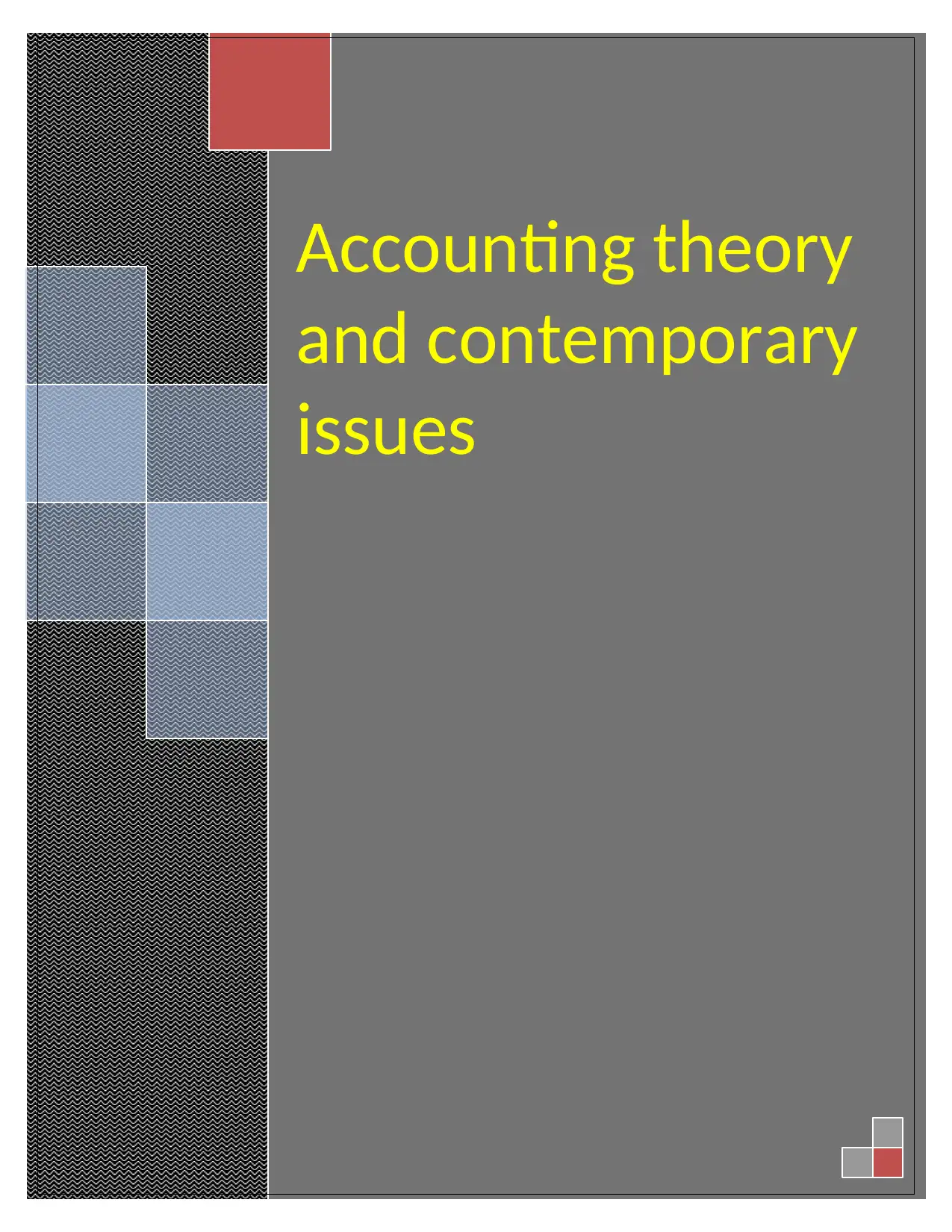
Accounting theory
and contemporary
issues
and contemporary
issues
Paraphrase This Document
Need a fresh take? Get an instant paraphrase of this document with our AI Paraphraser
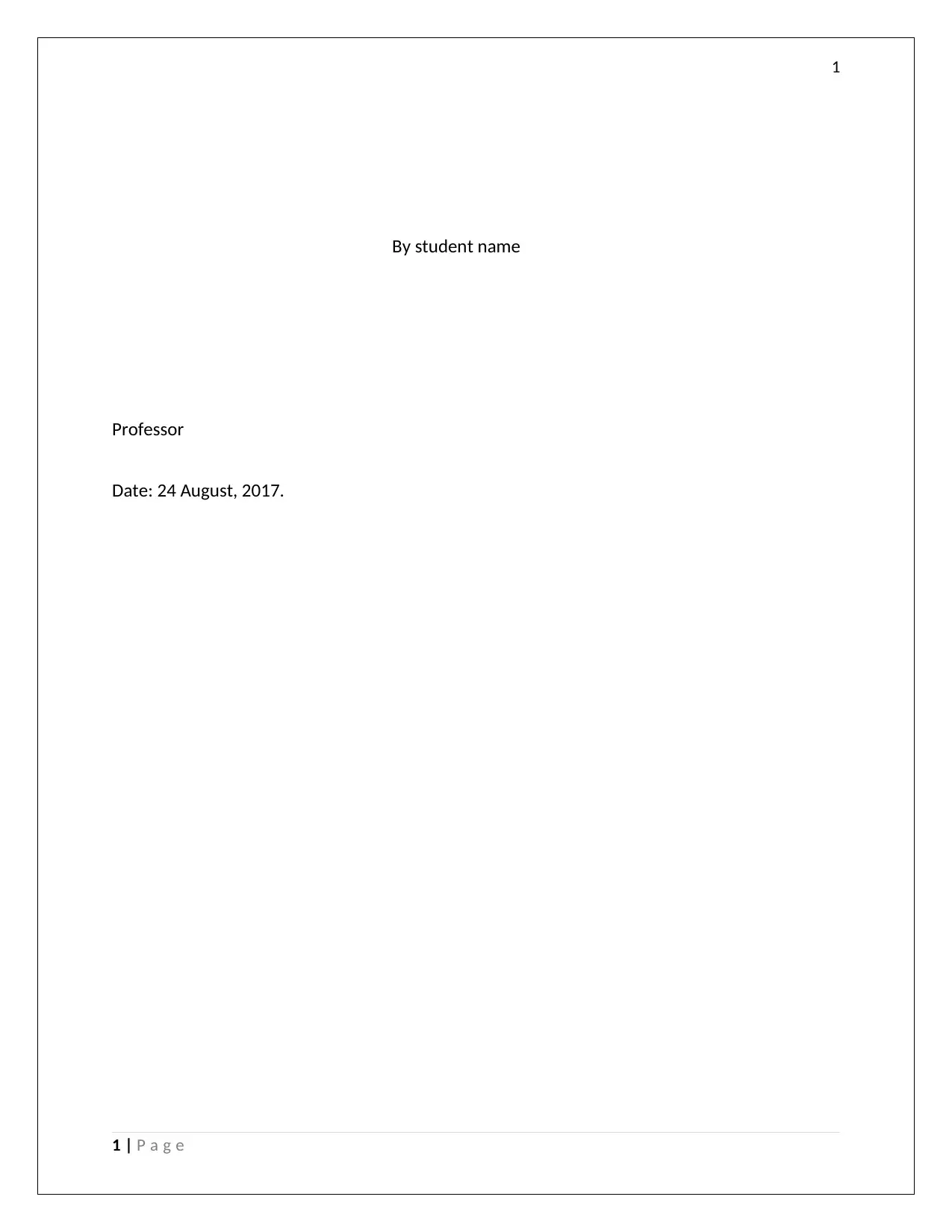
1
By student name
Professor
Date: 24 August, 2017.
1 | P a g e
By student name
Professor
Date: 24 August, 2017.
1 | P a g e
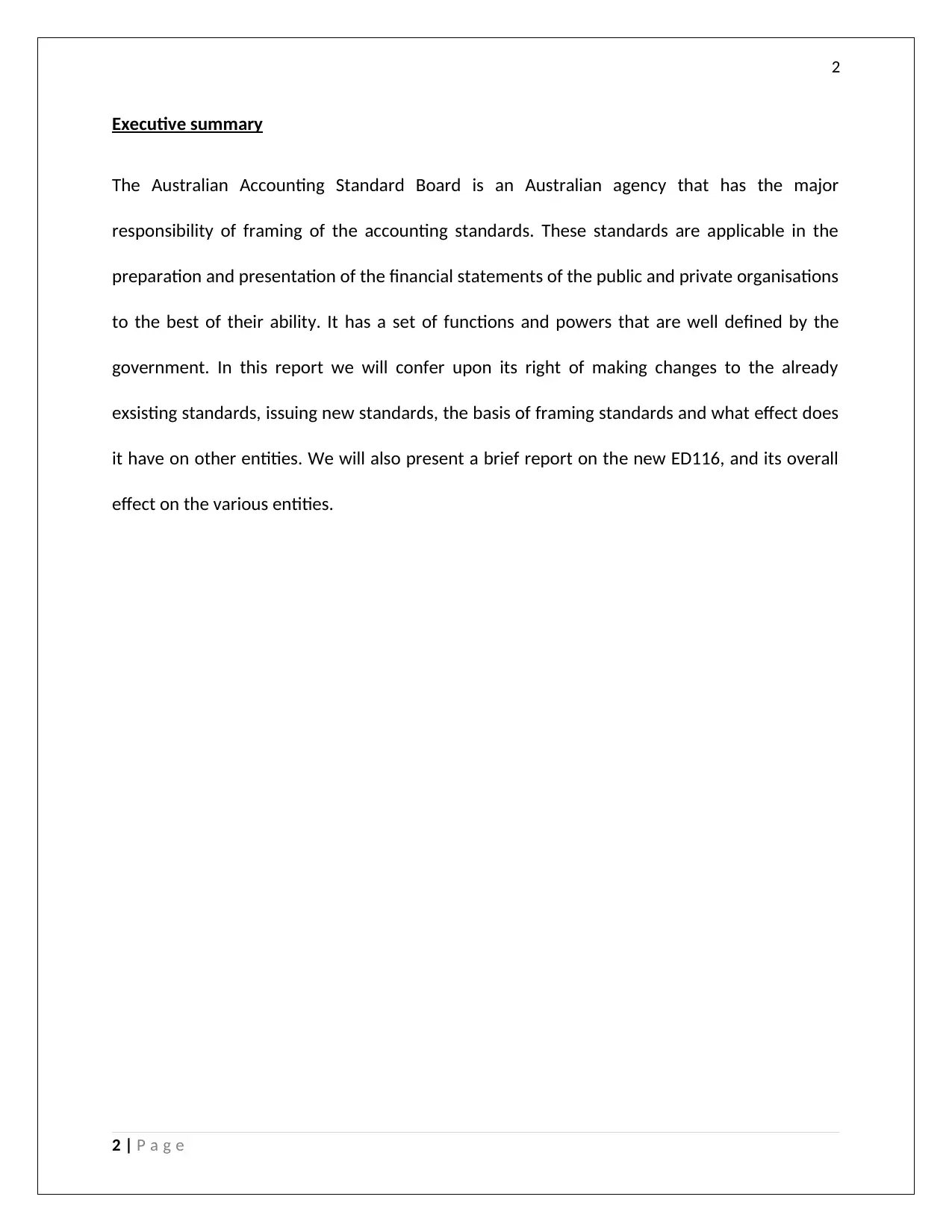
2
Executive summary
The Australian Accounting Standard Board is an Australian agency that has the major
responsibility of framing of the accounting standards. These standards are applicable in the
preparation and presentation of the financial statements of the public and private organisations
to the best of their ability. It has a set of functions and powers that are well defined by the
government. In this report we will confer upon its right of making changes to the already
exsisting standards, issuing new standards, the basis of framing standards and what effect does
it have on other entities. We will also present a brief report on the new ED116, and its overall
effect on the various entities.
2 | P a g e
Executive summary
The Australian Accounting Standard Board is an Australian agency that has the major
responsibility of framing of the accounting standards. These standards are applicable in the
preparation and presentation of the financial statements of the public and private organisations
to the best of their ability. It has a set of functions and powers that are well defined by the
government. In this report we will confer upon its right of making changes to the already
exsisting standards, issuing new standards, the basis of framing standards and what effect does
it have on other entities. We will also present a brief report on the new ED116, and its overall
effect on the various entities.
2 | P a g e
⊘ This is a preview!⊘
Do you want full access?
Subscribe today to unlock all pages.

Trusted by 1+ million students worldwide
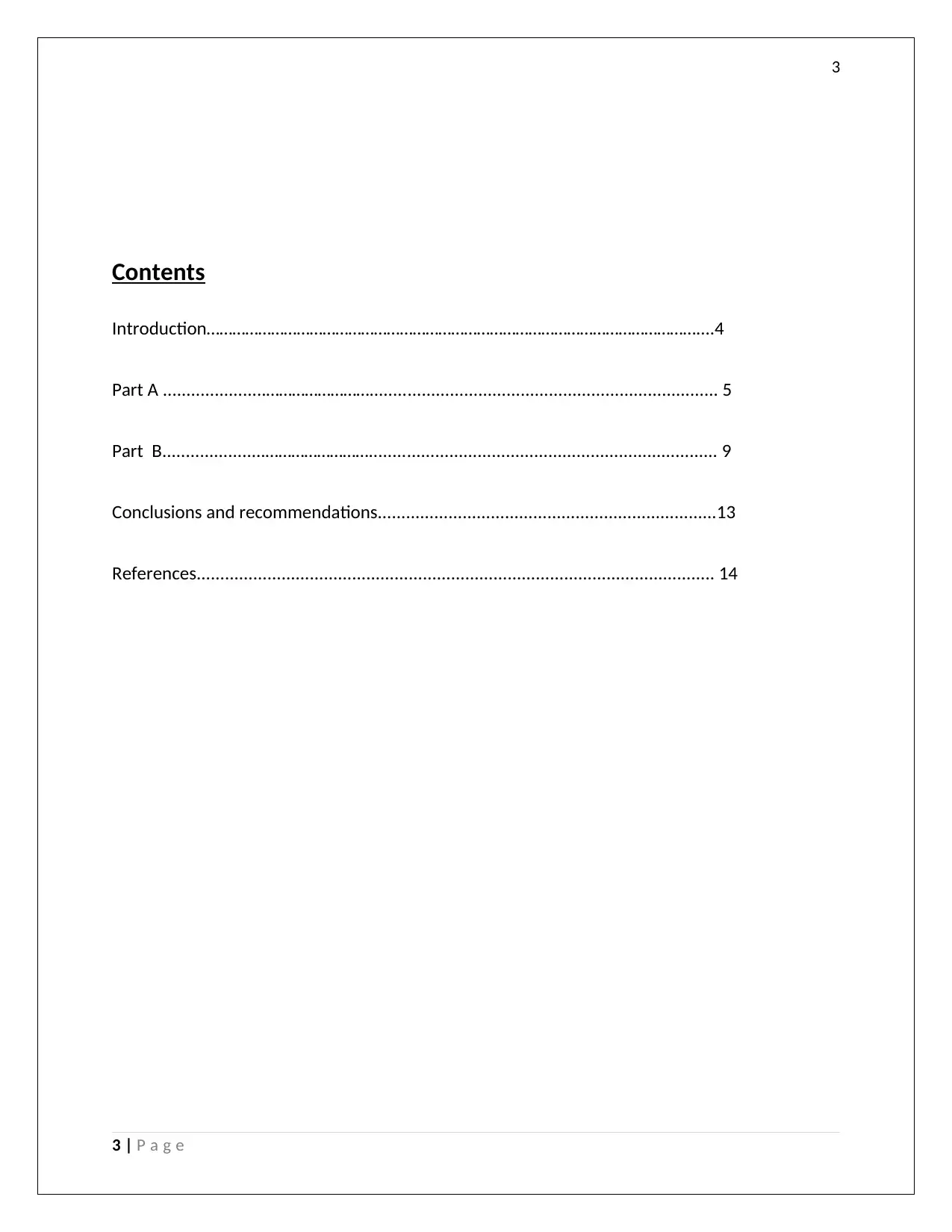
3
Contents
Introduction……………………………………………………………………………………………………....4
Part A ......................…………………….......................................................................... 5
Part B......................…………………….......................................................................... 9
Conclusions and recommendations........................................................................13
References.............................................................................................................. 14
3 | P a g e
Contents
Introduction……………………………………………………………………………………………………....4
Part A ......................…………………….......................................................................... 5
Part B......................…………………….......................................................................... 9
Conclusions and recommendations........................................................................13
References.............................................................................................................. 14
3 | P a g e
Paraphrase This Document
Need a fresh take? Get an instant paraphrase of this document with our AI Paraphraser
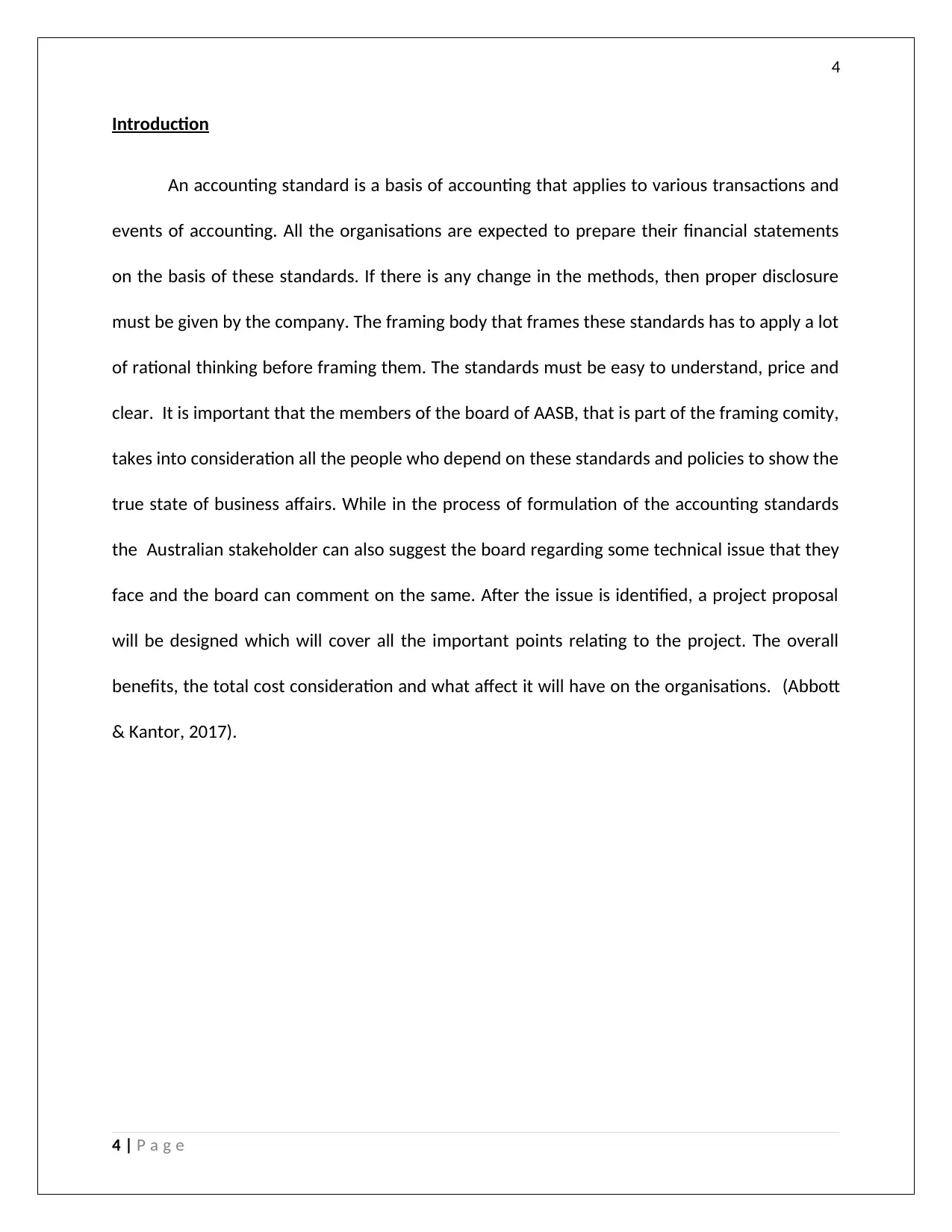
4
Introduction
An accounting standard is a basis of accounting that applies to various transactions and
events of accounting. All the organisations are expected to prepare their financial statements
on the basis of these standards. If there is any change in the methods, then proper disclosure
must be given by the company. The framing body that frames these standards has to apply a lot
of rational thinking before framing them. The standards must be easy to understand, price and
clear. It is important that the members of the board of AASB, that is part of the framing comity,
takes into consideration all the people who depend on these standards and policies to show the
true state of business affairs. While in the process of formulation of the accounting standards
the Australian stakeholder can also suggest the board regarding some technical issue that they
face and the board can comment on the same. After the issue is identified, a project proposal
will be designed which will cover all the important points relating to the project. The overall
benefits, the total cost consideration and what affect it will have on the organisations. (Abbott
& Kantor, 2017).
4 | P a g e
Introduction
An accounting standard is a basis of accounting that applies to various transactions and
events of accounting. All the organisations are expected to prepare their financial statements
on the basis of these standards. If there is any change in the methods, then proper disclosure
must be given by the company. The framing body that frames these standards has to apply a lot
of rational thinking before framing them. The standards must be easy to understand, price and
clear. It is important that the members of the board of AASB, that is part of the framing comity,
takes into consideration all the people who depend on these standards and policies to show the
true state of business affairs. While in the process of formulation of the accounting standards
the Australian stakeholder can also suggest the board regarding some technical issue that they
face and the board can comment on the same. After the issue is identified, a project proposal
will be designed which will cover all the important points relating to the project. The overall
benefits, the total cost consideration and what affect it will have on the organisations. (Abbott
& Kantor, 2017).
4 | P a g e
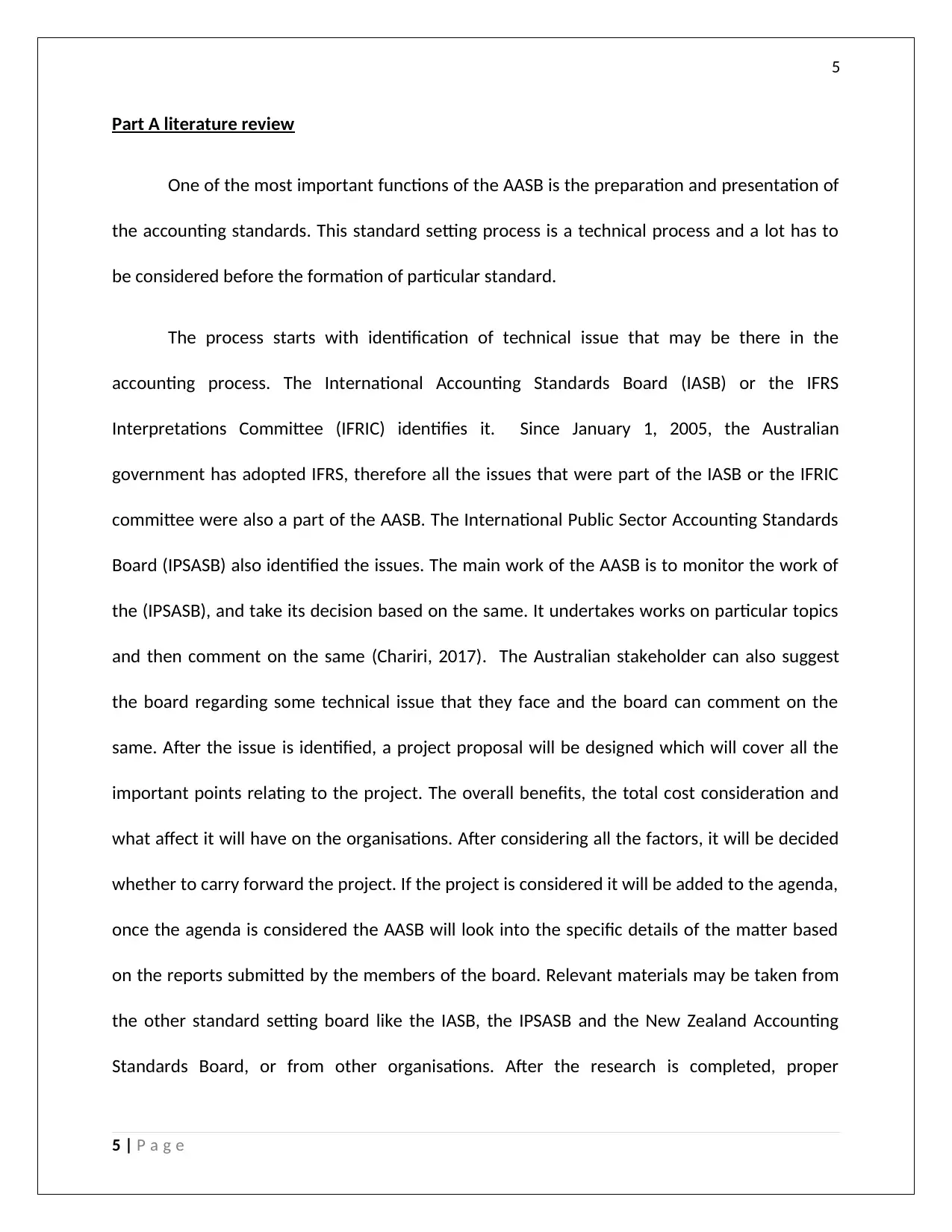
5
Part A literature review
One of the most important functions of the AASB is the preparation and presentation of
the accounting standards. This standard setting process is a technical process and a lot has to
be considered before the formation of particular standard.
The process starts with identification of technical issue that may be there in the
accounting process. The International Accounting Standards Board (IASB) or the IFRS
Interpretations Committee (IFRIC) identifies it. Since January 1, 2005, the Australian
government has adopted IFRS, therefore all the issues that were part of the IASB or the IFRIC
committee were also a part of the AASB. The International Public Sector Accounting Standards
Board (IPSASB) also identified the issues. The main work of the AASB is to monitor the work of
the (IPSASB), and take its decision based on the same. It undertakes works on particular topics
and then comment on the same (Chariri, 2017). The Australian stakeholder can also suggest
the board regarding some technical issue that they face and the board can comment on the
same. After the issue is identified, a project proposal will be designed which will cover all the
important points relating to the project. The overall benefits, the total cost consideration and
what affect it will have on the organisations. After considering all the factors, it will be decided
whether to carry forward the project. If the project is considered it will be added to the agenda,
once the agenda is considered the AASB will look into the specific details of the matter based
on the reports submitted by the members of the board. Relevant materials may be taken from
the other standard setting board like the IASB, the IPSASB and the New Zealand Accounting
Standards Board, or from other organisations. After the research is completed, proper
5 | P a g e
Part A literature review
One of the most important functions of the AASB is the preparation and presentation of
the accounting standards. This standard setting process is a technical process and a lot has to
be considered before the formation of particular standard.
The process starts with identification of technical issue that may be there in the
accounting process. The International Accounting Standards Board (IASB) or the IFRS
Interpretations Committee (IFRIC) identifies it. Since January 1, 2005, the Australian
government has adopted IFRS, therefore all the issues that were part of the IASB or the IFRIC
committee were also a part of the AASB. The International Public Sector Accounting Standards
Board (IPSASB) also identified the issues. The main work of the AASB is to monitor the work of
the (IPSASB), and take its decision based on the same. It undertakes works on particular topics
and then comment on the same (Chariri, 2017). The Australian stakeholder can also suggest
the board regarding some technical issue that they face and the board can comment on the
same. After the issue is identified, a project proposal will be designed which will cover all the
important points relating to the project. The overall benefits, the total cost consideration and
what affect it will have on the organisations. After considering all the factors, it will be decided
whether to carry forward the project. If the project is considered it will be added to the agenda,
once the agenda is considered the AASB will look into the specific details of the matter based
on the reports submitted by the members of the board. Relevant materials may be taken from
the other standard setting board like the IASB, the IPSASB and the New Zealand Accounting
Standards Board, or from other organisations. After the research is completed, proper
5 | P a g e
⊘ This is a preview!⊘
Do you want full access?
Subscribe today to unlock all pages.

Trusted by 1+ million students worldwide
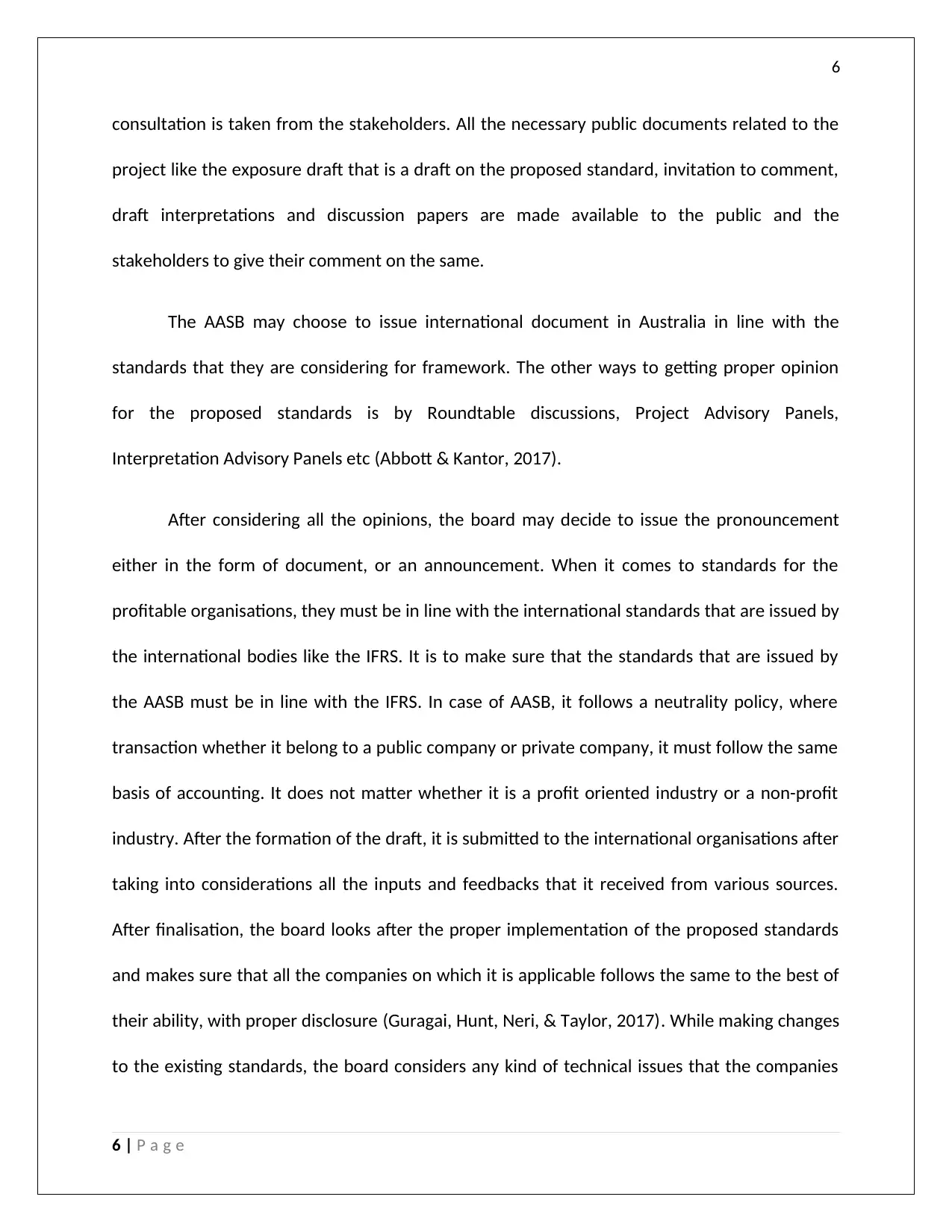
6
consultation is taken from the stakeholders. All the necessary public documents related to the
project like the exposure draft that is a draft on the proposed standard, invitation to comment,
draft interpretations and discussion papers are made available to the public and the
stakeholders to give their comment on the same.
The AASB may choose to issue international document in Australia in line with the
standards that they are considering for framework. The other ways to getting proper opinion
for the proposed standards is by Roundtable discussions, Project Advisory Panels,
Interpretation Advisory Panels etc (Abbott & Kantor, 2017).
After considering all the opinions, the board may decide to issue the pronouncement
either in the form of document, or an announcement. When it comes to standards for the
profitable organisations, they must be in line with the international standards that are issued by
the international bodies like the IFRS. It is to make sure that the standards that are issued by
the AASB must be in line with the IFRS. In case of AASB, it follows a neutrality policy, where
transaction whether it belong to a public company or private company, it must follow the same
basis of accounting. It does not matter whether it is a profit oriented industry or a non-profit
industry. After the formation of the draft, it is submitted to the international organisations after
taking into considerations all the inputs and feedbacks that it received from various sources.
After finalisation, the board looks after the proper implementation of the proposed standards
and makes sure that all the companies on which it is applicable follows the same to the best of
their ability, with proper disclosure (Guragai, Hunt, Neri, & Taylor, 2017). While making changes
to the existing standards, the board considers any kind of technical issues that the companies
6 | P a g e
consultation is taken from the stakeholders. All the necessary public documents related to the
project like the exposure draft that is a draft on the proposed standard, invitation to comment,
draft interpretations and discussion papers are made available to the public and the
stakeholders to give their comment on the same.
The AASB may choose to issue international document in Australia in line with the
standards that they are considering for framework. The other ways to getting proper opinion
for the proposed standards is by Roundtable discussions, Project Advisory Panels,
Interpretation Advisory Panels etc (Abbott & Kantor, 2017).
After considering all the opinions, the board may decide to issue the pronouncement
either in the form of document, or an announcement. When it comes to standards for the
profitable organisations, they must be in line with the international standards that are issued by
the international bodies like the IFRS. It is to make sure that the standards that are issued by
the AASB must be in line with the IFRS. In case of AASB, it follows a neutrality policy, where
transaction whether it belong to a public company or private company, it must follow the same
basis of accounting. It does not matter whether it is a profit oriented industry or a non-profit
industry. After the formation of the draft, it is submitted to the international organisations after
taking into considerations all the inputs and feedbacks that it received from various sources.
After finalisation, the board looks after the proper implementation of the proposed standards
and makes sure that all the companies on which it is applicable follows the same to the best of
their ability, with proper disclosure (Guragai, Hunt, Neri, & Taylor, 2017). While making changes
to the existing standards, the board considers any kind of technical issues that the companies
6 | P a g e
Paraphrase This Document
Need a fresh take? Get an instant paraphrase of this document with our AI Paraphraser
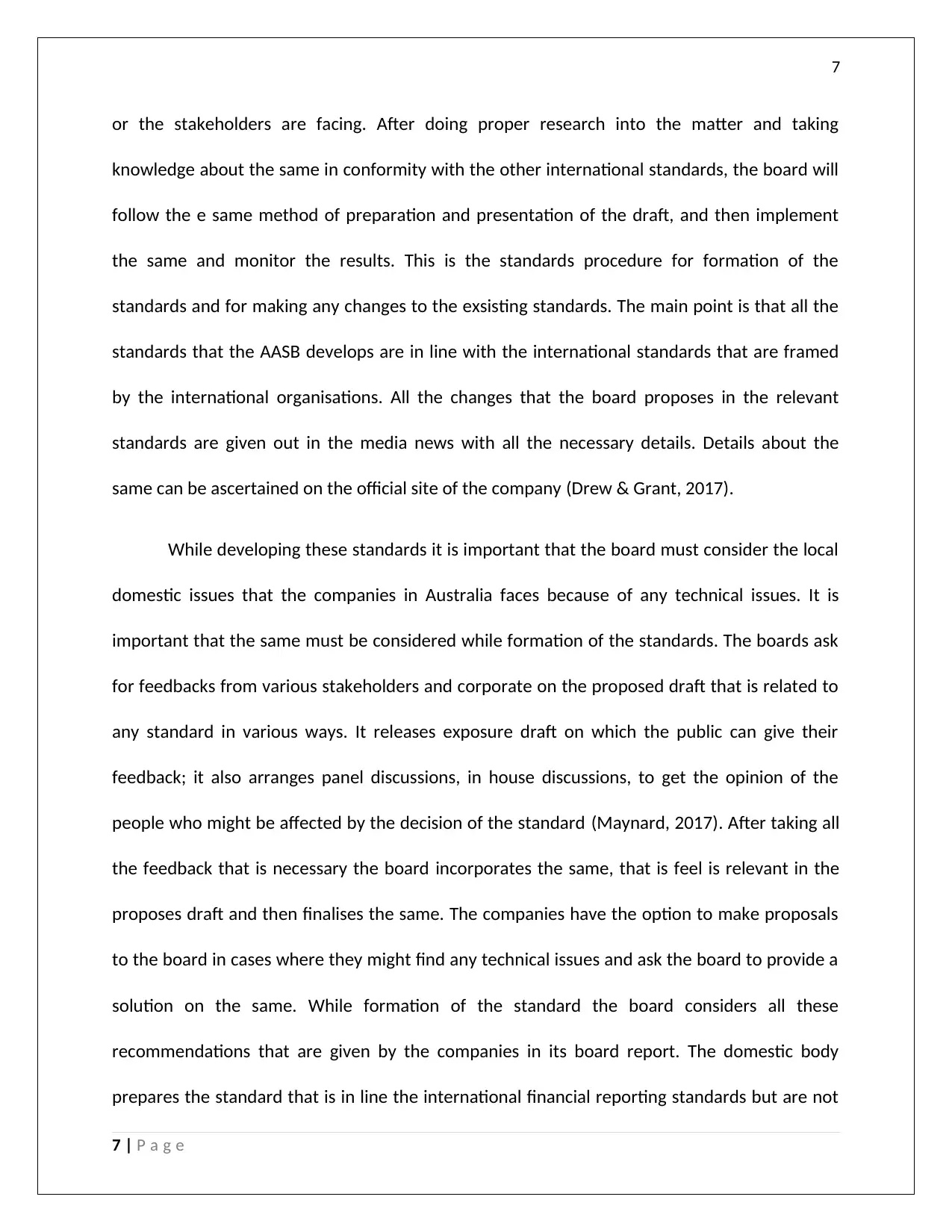
7
or the stakeholders are facing. After doing proper research into the matter and taking
knowledge about the same in conformity with the other international standards, the board will
follow the e same method of preparation and presentation of the draft, and then implement
the same and monitor the results. This is the standards procedure for formation of the
standards and for making any changes to the exsisting standards. The main point is that all the
standards that the AASB develops are in line with the international standards that are framed
by the international organisations. All the changes that the board proposes in the relevant
standards are given out in the media news with all the necessary details. Details about the
same can be ascertained on the official site of the company (Drew & Grant, 2017).
While developing these standards it is important that the board must consider the local
domestic issues that the companies in Australia faces because of any technical issues. It is
important that the same must be considered while formation of the standards. The boards ask
for feedbacks from various stakeholders and corporate on the proposed draft that is related to
any standard in various ways. It releases exposure draft on which the public can give their
feedback; it also arranges panel discussions, in house discussions, to get the opinion of the
people who might be affected by the decision of the standard (Maynard, 2017). After taking all
the feedback that is necessary the board incorporates the same, that is feel is relevant in the
proposes draft and then finalises the same. The companies have the option to make proposals
to the board in cases where they might find any technical issues and ask the board to provide a
solution on the same. While formation of the standard the board considers all these
recommendations that are given by the companies in its board report. The domestic body
prepares the standard that is in line the international financial reporting standards but are not
7 | P a g e
or the stakeholders are facing. After doing proper research into the matter and taking
knowledge about the same in conformity with the other international standards, the board will
follow the e same method of preparation and presentation of the draft, and then implement
the same and monitor the results. This is the standards procedure for formation of the
standards and for making any changes to the exsisting standards. The main point is that all the
standards that the AASB develops are in line with the international standards that are framed
by the international organisations. All the changes that the board proposes in the relevant
standards are given out in the media news with all the necessary details. Details about the
same can be ascertained on the official site of the company (Drew & Grant, 2017).
While developing these standards it is important that the board must consider the local
domestic issues that the companies in Australia faces because of any technical issues. It is
important that the same must be considered while formation of the standards. The boards ask
for feedbacks from various stakeholders and corporate on the proposed draft that is related to
any standard in various ways. It releases exposure draft on which the public can give their
feedback; it also arranges panel discussions, in house discussions, to get the opinion of the
people who might be affected by the decision of the standard (Maynard, 2017). After taking all
the feedback that is necessary the board incorporates the same, that is feel is relevant in the
proposes draft and then finalises the same. The companies have the option to make proposals
to the board in cases where they might find any technical issues and ask the board to provide a
solution on the same. While formation of the standard the board considers all these
recommendations that are given by the companies in its board report. The domestic body
prepares the standard that is in line the international financial reporting standards but are not
7 | P a g e
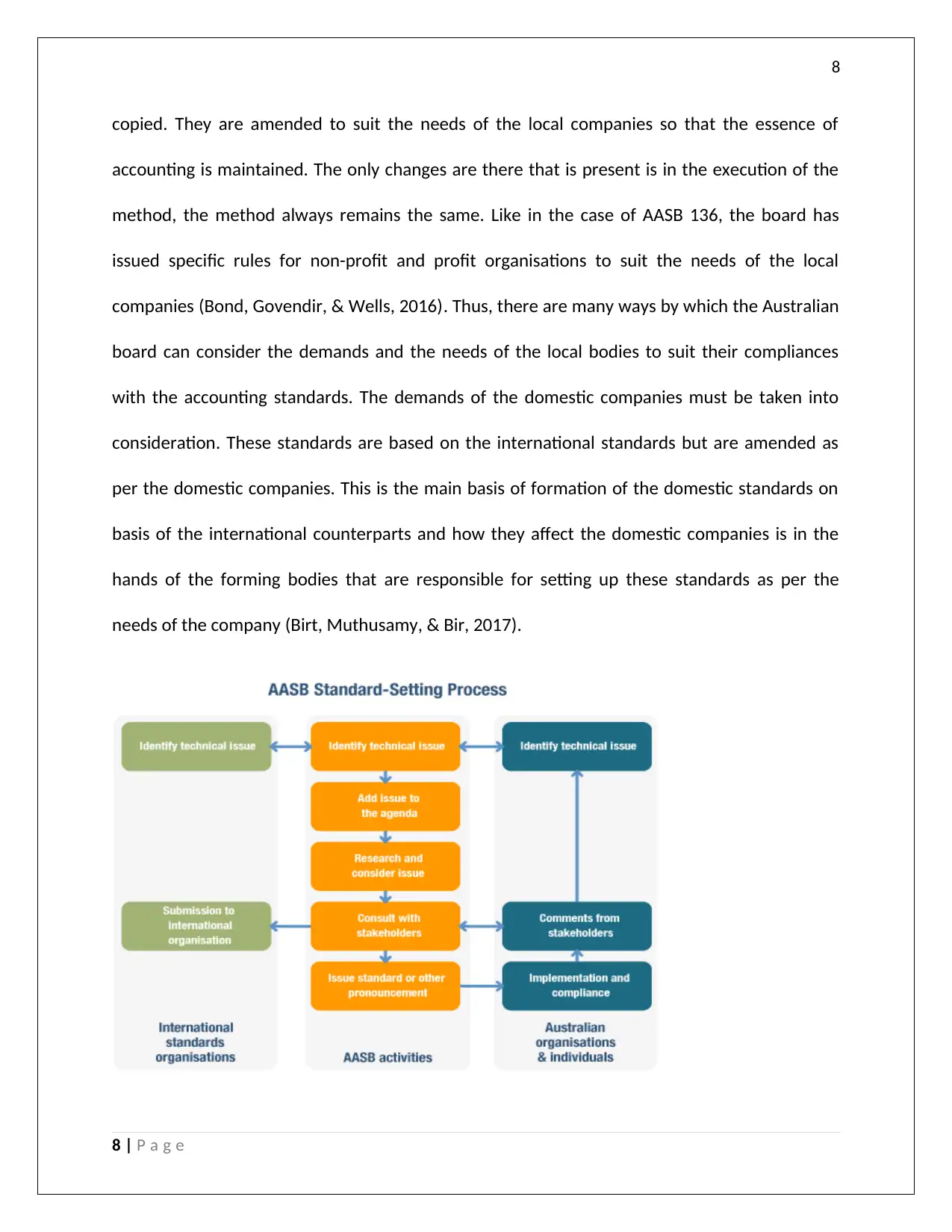
8
copied. They are amended to suit the needs of the local companies so that the essence of
accounting is maintained. The only changes are there that is present is in the execution of the
method, the method always remains the same. Like in the case of AASB 136, the board has
issued specific rules for non-profit and profit organisations to suit the needs of the local
companies (Bond, Govendir, & Wells, 2016). Thus, there are many ways by which the Australian
board can consider the demands and the needs of the local bodies to suit their compliances
with the accounting standards. The demands of the domestic companies must be taken into
consideration. These standards are based on the international standards but are amended as
per the domestic companies. This is the main basis of formation of the domestic standards on
basis of the international counterparts and how they affect the domestic companies is in the
hands of the forming bodies that are responsible for setting up these standards as per the
needs of the company (Birt, Muthusamy, & Bir, 2017).
8 | P a g e
copied. They are amended to suit the needs of the local companies so that the essence of
accounting is maintained. The only changes are there that is present is in the execution of the
method, the method always remains the same. Like in the case of AASB 136, the board has
issued specific rules for non-profit and profit organisations to suit the needs of the local
companies (Bond, Govendir, & Wells, 2016). Thus, there are many ways by which the Australian
board can consider the demands and the needs of the local bodies to suit their compliances
with the accounting standards. The demands of the domestic companies must be taken into
consideration. These standards are based on the international standards but are amended as
per the domestic companies. This is the main basis of formation of the domestic standards on
basis of the international counterparts and how they affect the domestic companies is in the
hands of the forming bodies that are responsible for setting up these standards as per the
needs of the company (Birt, Muthusamy, & Bir, 2017).
8 | P a g e
⊘ This is a preview!⊘
Do you want full access?
Subscribe today to unlock all pages.

Trusted by 1+ million students worldwide
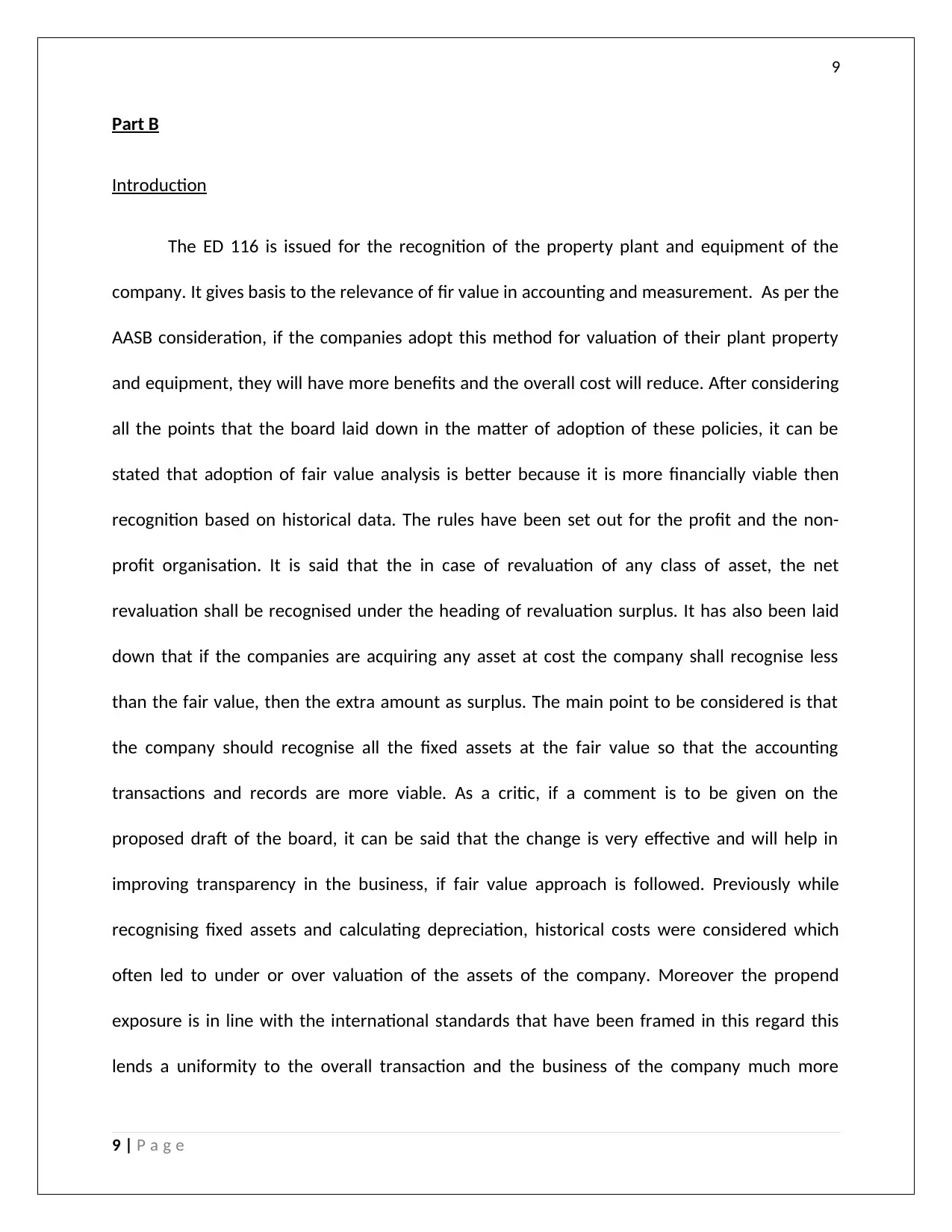
9
Part B
Introduction
The ED 116 is issued for the recognition of the property plant and equipment of the
company. It gives basis to the relevance of fir value in accounting and measurement. As per the
AASB consideration, if the companies adopt this method for valuation of their plant property
and equipment, they will have more benefits and the overall cost will reduce. After considering
all the points that the board laid down in the matter of adoption of these policies, it can be
stated that adoption of fair value analysis is better because it is more financially viable then
recognition based on historical data. The rules have been set out for the profit and the non-
profit organisation. It is said that the in case of revaluation of any class of asset, the net
revaluation shall be recognised under the heading of revaluation surplus. It has also been laid
down that if the companies are acquiring any asset at cost the company shall recognise less
than the fair value, then the extra amount as surplus. The main point to be considered is that
the company should recognise all the fixed assets at the fair value so that the accounting
transactions and records are more viable. As a critic, if a comment is to be given on the
proposed draft of the board, it can be said that the change is very effective and will help in
improving transparency in the business, if fair value approach is followed. Previously while
recognising fixed assets and calculating depreciation, historical costs were considered which
often led to under or over valuation of the assets of the company. Moreover the propend
exposure is in line with the international standards that have been framed in this regard this
lends a uniformity to the overall transaction and the business of the company much more
9 | P a g e
Part B
Introduction
The ED 116 is issued for the recognition of the property plant and equipment of the
company. It gives basis to the relevance of fir value in accounting and measurement. As per the
AASB consideration, if the companies adopt this method for valuation of their plant property
and equipment, they will have more benefits and the overall cost will reduce. After considering
all the points that the board laid down in the matter of adoption of these policies, it can be
stated that adoption of fair value analysis is better because it is more financially viable then
recognition based on historical data. The rules have been set out for the profit and the non-
profit organisation. It is said that the in case of revaluation of any class of asset, the net
revaluation shall be recognised under the heading of revaluation surplus. It has also been laid
down that if the companies are acquiring any asset at cost the company shall recognise less
than the fair value, then the extra amount as surplus. The main point to be considered is that
the company should recognise all the fixed assets at the fair value so that the accounting
transactions and records are more viable. As a critic, if a comment is to be given on the
proposed draft of the board, it can be said that the change is very effective and will help in
improving transparency in the business, if fair value approach is followed. Previously while
recognising fixed assets and calculating depreciation, historical costs were considered which
often led to under or over valuation of the assets of the company. Moreover the propend
exposure is in line with the international standards that have been framed in this regard this
lends a uniformity to the overall transaction and the business of the company much more
9 | P a g e
Paraphrase This Document
Need a fresh take? Get an instant paraphrase of this document with our AI Paraphraser
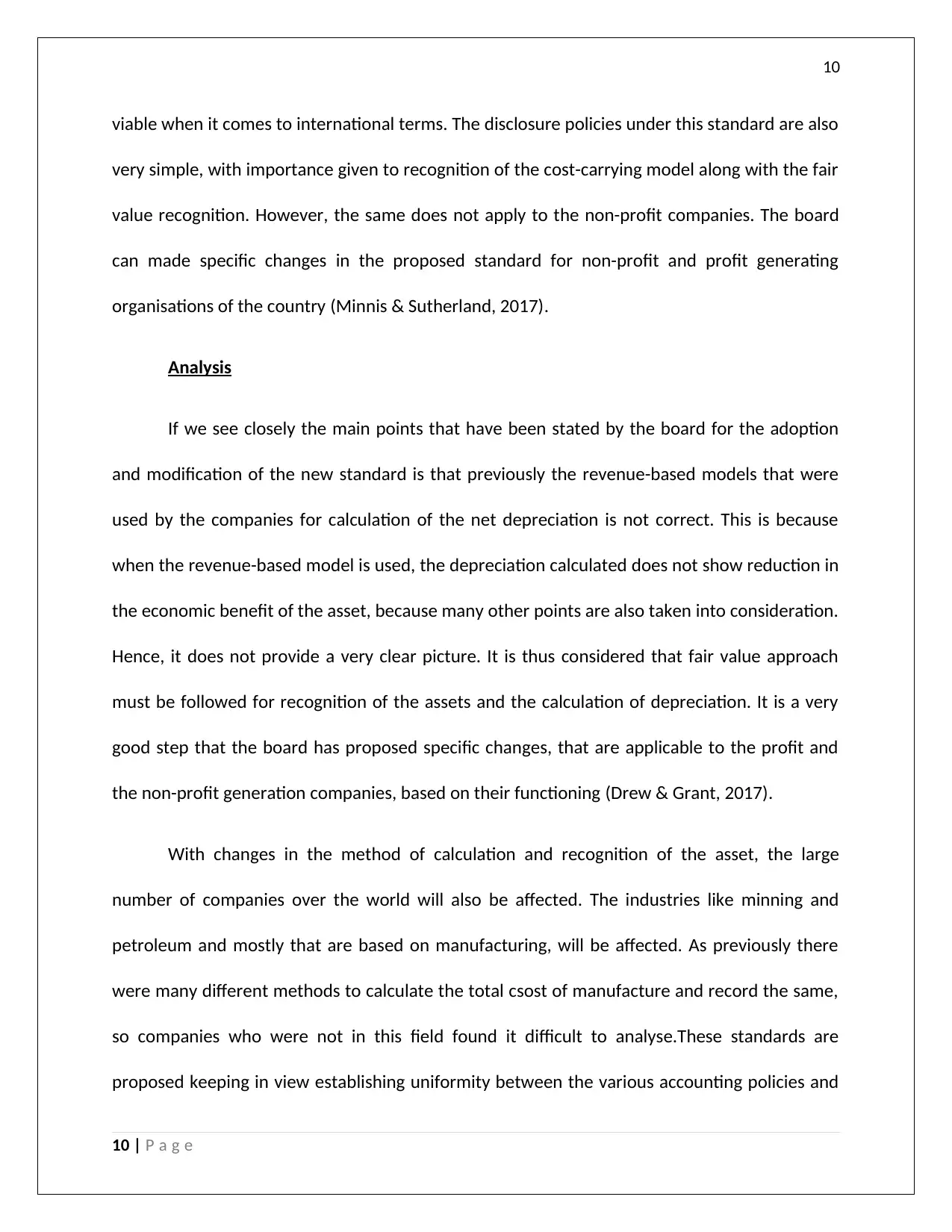
10
viable when it comes to international terms. The disclosure policies under this standard are also
very simple, with importance given to recognition of the cost-carrying model along with the fair
value recognition. However, the same does not apply to the non-profit companies. The board
can made specific changes in the proposed standard for non-profit and profit generating
organisations of the country (Minnis & Sutherland, 2017).
Analysis
If we see closely the main points that have been stated by the board for the adoption
and modification of the new standard is that previously the revenue-based models that were
used by the companies for calculation of the net depreciation is not correct. This is because
when the revenue-based model is used, the depreciation calculated does not show reduction in
the economic benefit of the asset, because many other points are also taken into consideration.
Hence, it does not provide a very clear picture. It is thus considered that fair value approach
must be followed for recognition of the assets and the calculation of depreciation. It is a very
good step that the board has proposed specific changes, that are applicable to the profit and
the non-profit generation companies, based on their functioning (Drew & Grant, 2017).
With changes in the method of calculation and recognition of the asset, the large
number of companies over the world will also be affected. The industries like minning and
petroleum and mostly that are based on manufacturing, will be affected. As previously there
were many different methods to calculate the total csost of manufacture and record the same,
so companies who were not in this field found it difficult to analyse.These standards are
proposed keeping in view establishing uniformity between the various accounting policies and
10 | P a g e
viable when it comes to international terms. The disclosure policies under this standard are also
very simple, with importance given to recognition of the cost-carrying model along with the fair
value recognition. However, the same does not apply to the non-profit companies. The board
can made specific changes in the proposed standard for non-profit and profit generating
organisations of the country (Minnis & Sutherland, 2017).
Analysis
If we see closely the main points that have been stated by the board for the adoption
and modification of the new standard is that previously the revenue-based models that were
used by the companies for calculation of the net depreciation is not correct. This is because
when the revenue-based model is used, the depreciation calculated does not show reduction in
the economic benefit of the asset, because many other points are also taken into consideration.
Hence, it does not provide a very clear picture. It is thus considered that fair value approach
must be followed for recognition of the assets and the calculation of depreciation. It is a very
good step that the board has proposed specific changes, that are applicable to the profit and
the non-profit generation companies, based on their functioning (Drew & Grant, 2017).
With changes in the method of calculation and recognition of the asset, the large
number of companies over the world will also be affected. The industries like minning and
petroleum and mostly that are based on manufacturing, will be affected. As previously there
were many different methods to calculate the total csost of manufacture and record the same,
so companies who were not in this field found it difficult to analyse.These standards are
proposed keeping in view establishing uniformity between the various accounting policies and
10 | P a g e
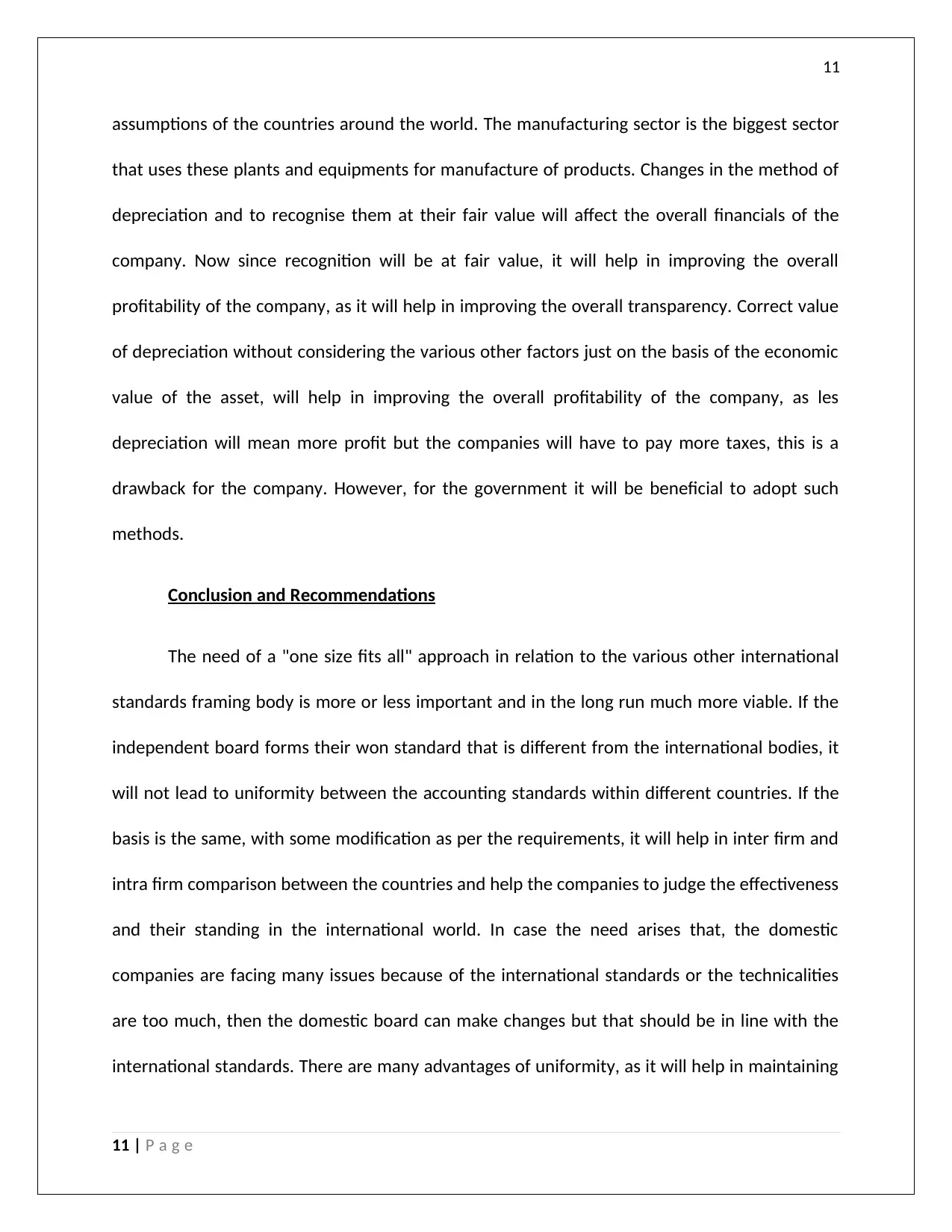
11
assumptions of the countries around the world. The manufacturing sector is the biggest sector
that uses these plants and equipments for manufacture of products. Changes in the method of
depreciation and to recognise them at their fair value will affect the overall financials of the
company. Now since recognition will be at fair value, it will help in improving the overall
profitability of the company, as it will help in improving the overall transparency. Correct value
of depreciation without considering the various other factors just on the basis of the economic
value of the asset, will help in improving the overall profitability of the company, as les
depreciation will mean more profit but the companies will have to pay more taxes, this is a
drawback for the company. However, for the government it will be beneficial to adopt such
methods.
Conclusion and Recommendations
The need of a "one size fits all" approach in relation to the various other international
standards framing body is more or less important and in the long run much more viable. If the
independent board forms their won standard that is different from the international bodies, it
will not lead to uniformity between the accounting standards within different countries. If the
basis is the same, with some modification as per the requirements, it will help in inter firm and
intra firm comparison between the countries and help the companies to judge the effectiveness
and their standing in the international world. In case the need arises that, the domestic
companies are facing many issues because of the international standards or the technicalities
are too much, then the domestic board can make changes but that should be in line with the
international standards. There are many advantages of uniformity, as it will help in maintaining
11 | P a g e
assumptions of the countries around the world. The manufacturing sector is the biggest sector
that uses these plants and equipments for manufacture of products. Changes in the method of
depreciation and to recognise them at their fair value will affect the overall financials of the
company. Now since recognition will be at fair value, it will help in improving the overall
profitability of the company, as it will help in improving the overall transparency. Correct value
of depreciation without considering the various other factors just on the basis of the economic
value of the asset, will help in improving the overall profitability of the company, as les
depreciation will mean more profit but the companies will have to pay more taxes, this is a
drawback for the company. However, for the government it will be beneficial to adopt such
methods.
Conclusion and Recommendations
The need of a "one size fits all" approach in relation to the various other international
standards framing body is more or less important and in the long run much more viable. If the
independent board forms their won standard that is different from the international bodies, it
will not lead to uniformity between the accounting standards within different countries. If the
basis is the same, with some modification as per the requirements, it will help in inter firm and
intra firm comparison between the countries and help the companies to judge the effectiveness
and their standing in the international world. In case the need arises that, the domestic
companies are facing many issues because of the international standards or the technicalities
are too much, then the domestic board can make changes but that should be in line with the
international standards. There are many advantages of uniformity, as it will help in maintaining
11 | P a g e
⊘ This is a preview!⊘
Do you want full access?
Subscribe today to unlock all pages.

Trusted by 1+ million students worldwide
1 out of 16
Related Documents
Your All-in-One AI-Powered Toolkit for Academic Success.
+13062052269
info@desklib.com
Available 24*7 on WhatsApp / Email
![[object Object]](/_next/static/media/star-bottom.7253800d.svg)
Unlock your academic potential
Copyright © 2020–2025 A2Z Services. All Rights Reserved. Developed and managed by ZUCOL.





